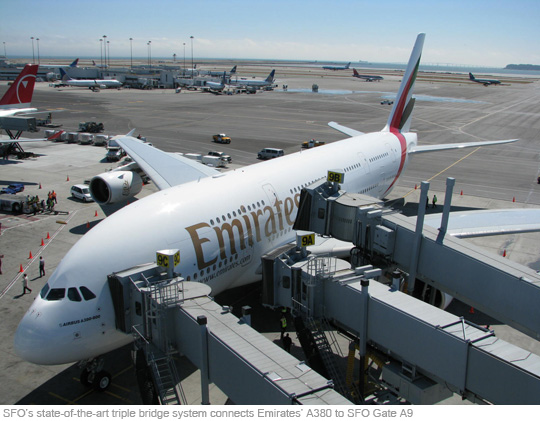Multi-aisle commercial aircraft adopt a multi-door boarding strategy rather than a single-huge door (see the A380 or the B747, both use two doors). This helps under the structural viewpoint: the presence of a door (cargo or passenger that might be) induces design problems that are amplified if the compartment has to be pressurised.
A door interrupts both frames and stringers and weakens the overall aircraft structure. A huge door interrupts many more frames than a small one and two small ones can be set apart from each other to have some continuous frames between the two, restoring some rigidity.
The complex closure systems ensure that part of the stresses are carried by the door material, but it will never be perfectly transmitted as it would be without a door. As mentioned before, the stresses are heightened if the compartment is pressurised (as when passengers have to be transported).


